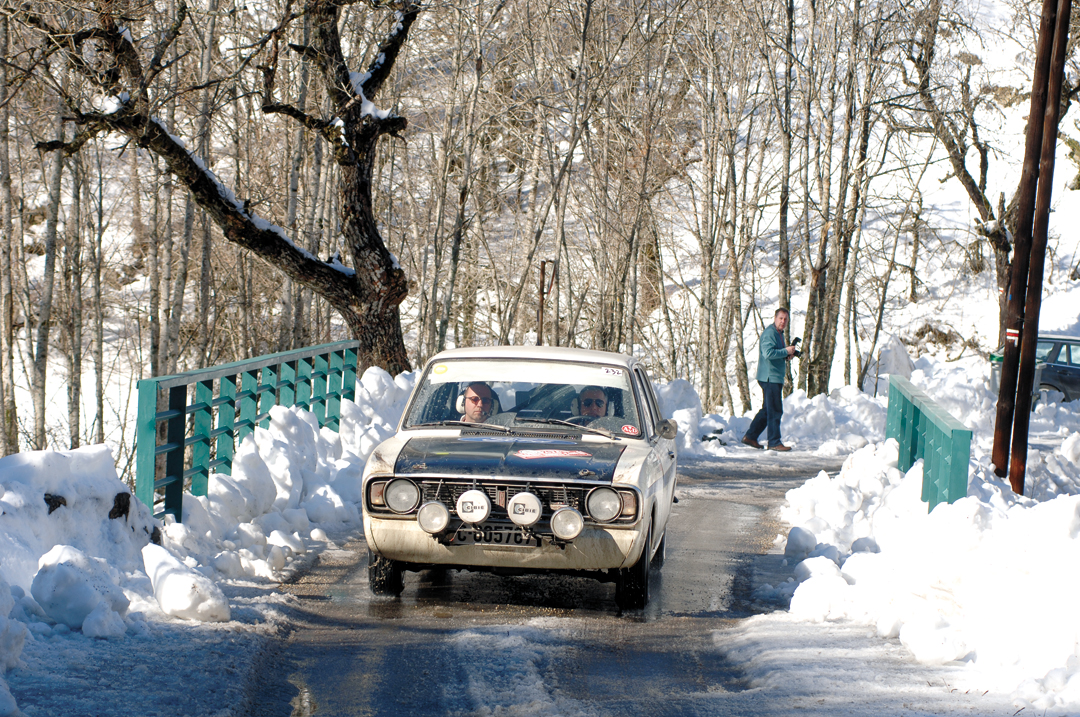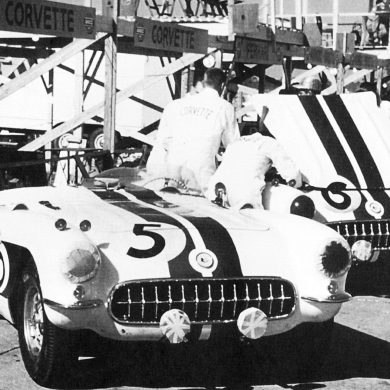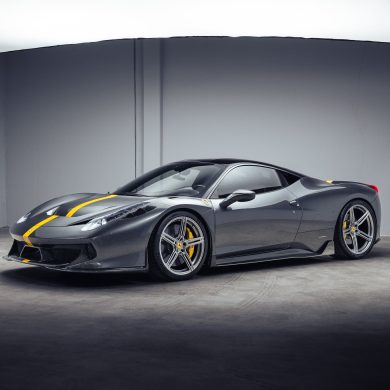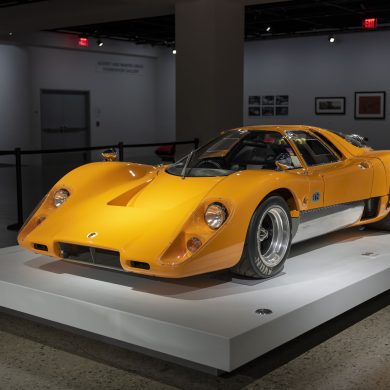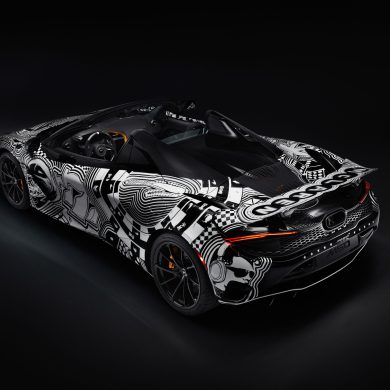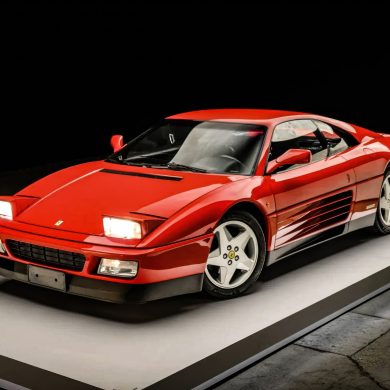In one of the press releases sent out by the organizers, the Automobile Club of Monaco, just before Christmas, they hoped that maybe the 2006 edition of the Rallye Monte Carlo Historique might be blessed with weather that typified the challenges of Montes of the past. Little did anyone know how close that wish would come to fruition.
Very heavy snow started falling in the Hautes-Alpes on the Friday of the concentration run and, according to one competitor, “just got worse and worse.” The whole event was a serious challenge, yet through it all came the team of Compas and Buhot in their Porsche 914/6 to take a well-deserved victory.
The Rallye Historique is run on very traditional lines. As with all Montes of the past, five start points across Europe are chosen and those most popular contemporarily were Copenhagen, Reims, Barcelona, Turin and Monte Carlo itself. The period that today’s event reflects most are the years from the late 1950s until the late 1970s when, unlike today, it was not just a matter of the competitors racing to their fastest possible time over closed-road special-stages, it was rather more a closely coordinated effort between driver and co-driver. For a start, the Historique stages are not closed roads. As it was 40–50 years ago, competitive stages are long and the cars must complete them in exactly a laid down time. This does not mean that they cannot go quickly—all were pressing on in a very determined fashion over some Cols—but co-driver timing accuracy and precision is as vital as the driver keeping the car on the road, and this all has to happen in very difficult conditions and certainly over a very long distance. No electronic timing devices here! Manual clocks and watches and traditional Haldas, often driven by cable externally from a front wheelhub are the name of the game.
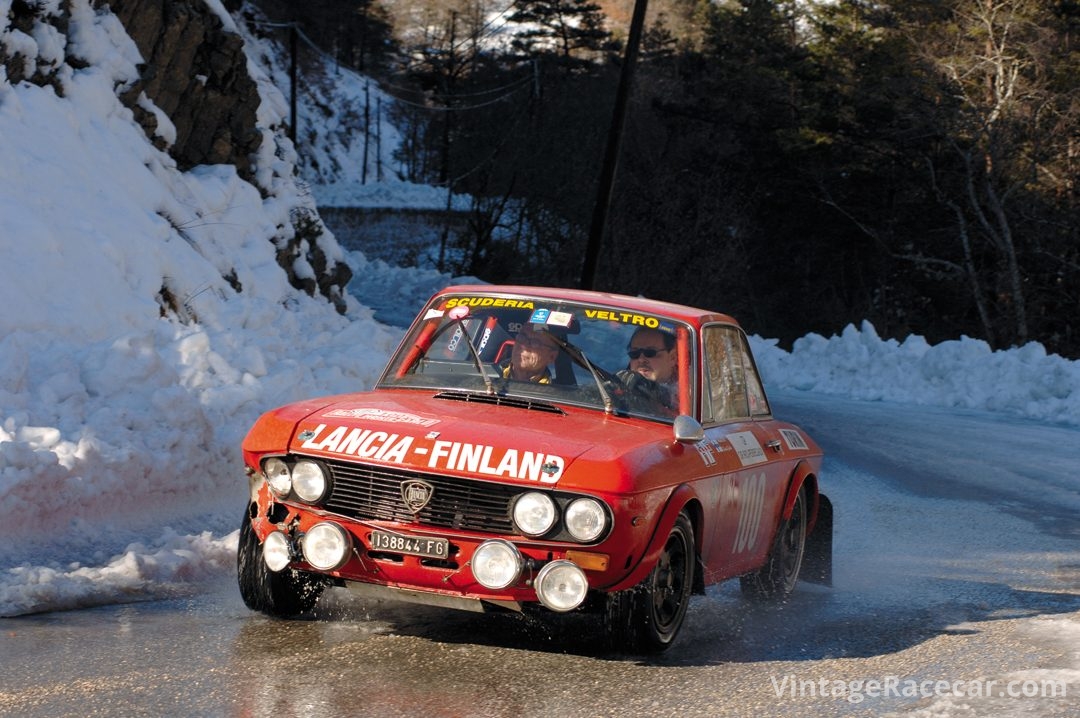
It is only possible to enter a car of a type that has taken part in a Monte Carlo Rally in the past. This, and the fact that it is not necessarily the fastest car that wins, makes for a fabulous variety in the huge entry of up to 350 cars. Stand at any one point on the rally and it takes three hours for the cavalcade of retro rally masters to go past!
Some of the unusual cars to take part this year included Tenconi/Pasquali bravely running their tiny 1961 Abarth Bialbero, while at the other end of the scale Schwarz/Guarnieri manhandled their ’68 Ford Fairlane over the Cols looking like a fugitive from the Daytona 500 NASCAR race.
Before this year’s rally ended, star driver Clay Regazzoni was forced to retire but 275 cars were classified as official finishers. Porsches filled the first three positions, with Zavanella/Casavola 2nd in a 914/4 and Thoreau/Do in a 911S 2.2 3rd. The tough snowy conditions would have suited these cars, but this should take nothing away from their achievements.
By Peter Collins


